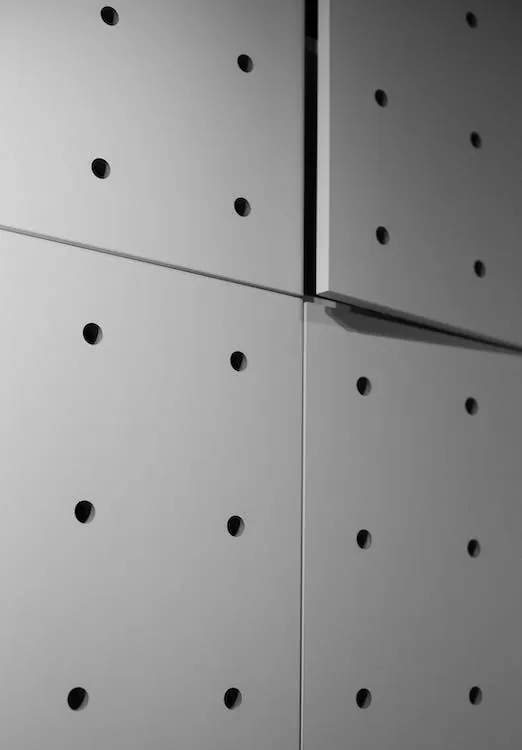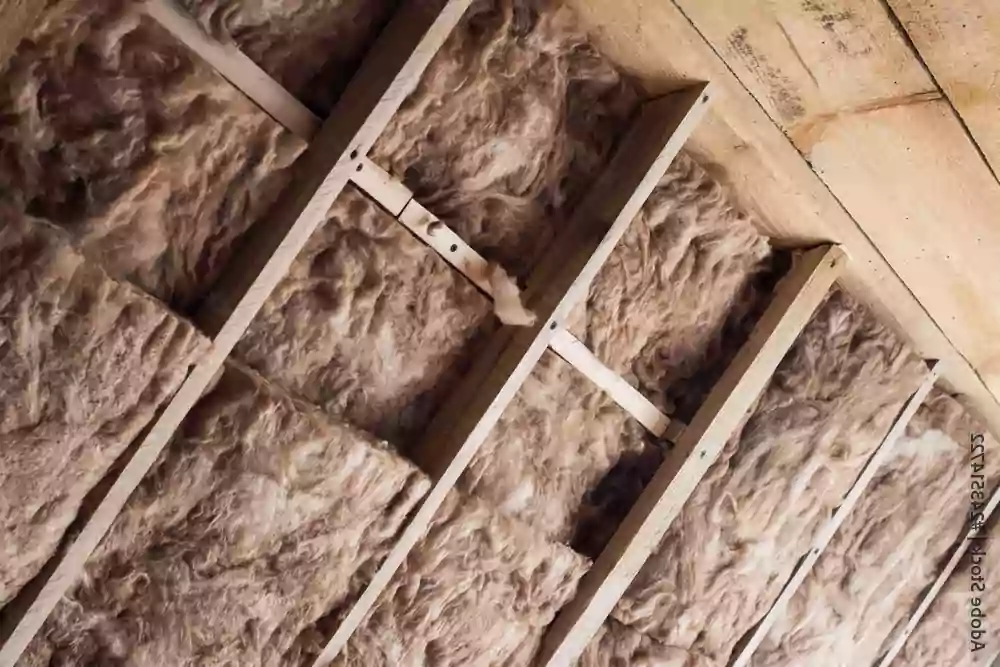The Quiet Revolution: How to Insulate Your Home Internally and Put It Into Practice
Calm and calm have become rare in today’s hectic environment. Our mental health may suffer from the incessant din of traffic, the ping of electronic gadgets, and the general cacophony of everyday existence. Internal sound insulation provides a solution whether your goal is to create a calm home office, a peaceful bedroom hideaway, or just to lessen the noise from busy household activities. So, here in this blog post will explain internal sound insulation, internal window soundproofing and soundproofing internal stud wallsgo over its advantages, materials, and installation methods, and provide helpful advice on how to put it into your house.
Understanding Internal Sound Insulation
Internal sound insulation, sometimes referred to as soundproofing, is the technique of limiting sound transmission between rooms within a building. Unlike external sound insulation, which focuses on preventing noise from entering or leaving the building, internal sound insulation addresses the noise generated within the home. Sounds from footfall, appliances, conversations, and other sources can be included in this. If you want more information about sound insulation, Soundproofing Office Ceilings, just like the post.
Adding insulation to interior walls for sound -benefits

Why Take Internal Sound Insulation Into Account? Let’s see-
Before beginning the how-to, it’s critical to comprehend the following reasons why your home might benefit from internal sound insulation:
Improved Secrecy-
In areas like bedrooms, bathrooms, and home offices where privacy is of the utmost importance, internal sound insulation is essential. It ensures that conversations remain confidential and that noise from other rooms doesn’t interrupt your activities.
Improved Sleep Quality
Noise pollution can significantly disrupt sleep, leading to a range of health issues such as stress, fatigue, and impaired cognitive function. Soundproofing your bedroom can create a more restful environment, promoting better sleep and overall well-being.
Increased Comfort
Whether it’s the sound of footsteps overhead or the TV blaring in the next room, internal sound insulation can reduce the noise levels within your home, making it a more comfortable and relaxing place to live.
Better Focus and Productivity
In a world where remote work is becoming the norm, having a quiet workspace is essential. According to research, Internal sound insulation really can help create an environment conducive to focus and productivity by minimizing distractions.
Enhanced Property Value Soundproofing
your home can be an attractive feature for potential buyers, especially in busy urban areas. It’s a long-term investment that can be helps to increase the value of your property and privacy.
Key Principles of Sound Insulation Effective sound insulation relies on several key principles:
- Mass The heavier and denser a material, the better it is at blocking sound. This is why materials like dense drywall, concrete, and heavy curtains are often used in soundproofing.
- Retarding
By absorbing sound energy and turning it into heat, damping reduces the amount of sound that can pass through a medium. Special damping materials, such as acoustic panels and damping compounds, are designed for this purpose. - Decoupling Decoupling involves creating a physical separation between two sides of a structure (e.g., walls, floors, ceilings) to prevent sound from traveling through solid materials. This can be achieved using resilient channels, sound clips, or double-stud walls.
- Absorption Sound absorption
involves using materials that soak up sound waves, preventing them from bouncing around a room. Acoustic foam panels, carpets, and heavy drapes are sound-absorbing materials.
Internal Sound Insulation- Best Materials
Several materials are frequently utilised for sound insulation within buildings. Depending on the kind of sound you’re aiming to block or absorb, each has a particular function. Firstly,
Acoustic Panels –

Specialised boards wrapped with foam or cloth are called acoustic panels, and their purpose is to absorb sound waves and lessen echo. They’re perfect for spaces like music studios or home theatres where you wish to enhance the sound quality.
Sound-absorbing Plasterboard
This material, which is also referred to as sound-damping plasterboard, is composed of layers of damping material added to a layer of gypsum. Because it is denser and heavier than ordinary plasterboard, it effectively stops sound from travelling between rooms.
Vinyl with mass loading (MLV)
MLV is a dense, are mostly known as flexible material that gives walls, floors, as well as ceilings more mass without using a lot of room. To increase the efficiency of other soundproofing materials, it is frequently used in combination with them.
Sturdy Channels
These are metal strips that fasten to joists or wall studs. The robust channels, which produce a tiny space between the plasterboard and the structure by decoupling, are then used to attach the plasterboard.
Sound-absorbing sealants
Sound can enter spaces near electrical outlets, doors, and windows. To stop sound from leaking through these gaps, flexible, non-hardening materials called acoustic sealants are used.
Rugs & Carpets Carpets and rugs,
especially those with hardwood or tile floors, can absorb sound and assist reduce noise, albeit they are not as effective as specialised materials.
The Rewards of a Calm House
Better than a luxury, internal sound insulation is an investment in your well-being. We know You want to make your house a more comfortable, as well as productive, and serene place by cutting down on noise.
Adding Insulation To Interior Walls For Sound/ Internal Wall Acoustic Insulation

Temperature control and energy efficiency are frequently the first things that come to mind when considering house insulation. However, by lowering noise transmission between rooms, soundproofing internal walls with insulation can significantly increase the comfort of your living areas. Soundproof insulation for interior walls is a not only useful but also efficient way to reduce noise in your house, whether you live in a busy city or simply desire a more tranquil space.
Procedure for Insulating Interior Walls with Acoustic Material
Set Up the Work Area:
Make the Space Clear: To keep out dust and debris, move furniture and cover floors with plastic sheeting. Cut Off Power: To prevent mishaps, cut off the power if you are working close to electrical outlets or wiring.
To enter the wall cavity:
Take Down Plasterboard: To gain access to the wall studs, try to take down the current plasterboard. This will make more comprehensive insulation possible. If taking down the plasterboard isn’t an option, think about putting loose-fill insulation through tiny holes.
Put in Insulation
Cut the Material: After measuring the space between the studs in the wall, cut the insulation batts so they fit tightly.
Fit Insulation: Stuff mineral wool or fibreglass insulation into the wall cavities. Make sure there are no gaps; air leaks allow sound to quickly enter uninsulated areas.
Increase the Number of Soundproofing Layers:
Install Acoustic Foam: To absorb extra sound, if needed, affix acoustic foam panels to freshly built or existing plasterboard.
Apply Mass Loaded Vinyl: MLV should be fastened to studs prior to fresh plasterboard installation. This increases density and obstructs sound waves even more.
Installing or replacing plasterboard:
Attach Drywall: Over the insulation and any other sound-absorbing materials, firmly install new drywall. Make advantage of soundproof plasterboard for optimal soundproofing.
Seal the Edges:
To stop sound from leaking out of plasterboard, use an acoustic sealant around its perimeter.
Finish the Wall
For a smooth finish, tape, mud and sand the plasterboard joints. Paint: After the wall is smooth, prime and apply a colour that complements the décor. At last, we can say Your home’s comfort can be improved by investing in inside wall insulation for good soundproofing. You may dramatically lower noise transmission and create a more peaceful living space by utilising the right materials and following the necessary procedures, such as fibreglass, mineral wool, acoustic foam, or mass-loaded vinyl. Acoustic insulation is only the key to reaching your goals, whether they be a soundproof entertainment area, and calm home office, or a quiet bedroom.
Internal Window Soundproofing And Soundproofing Internal Stud Walls

Soundproofing your internal windows and stud walls can significantly improve your home’s soundproofing, whether your goal is to block out outside noise or stop sound from passing through rooms. We’ll discuss the finest materials for soundproofing these spaces in this blog post, along with detailed instructions for each.
Soundproofing Windows Inside Windows are frequently your home’s weakest sound-isolation points, letting outside noise in. Fortunately, if you have the correct supplies, soundproofing your inside windows can be a simple task.
Top Materials for Acoustic Window Inserts and Soundproofing Windows:
Acoustic Window Inserts-
These translucent, custom-fitted panels effectively block noise by adding an extra layer of glass to your current windows.
Soundproof curtains:
Thick, heavy drapes with a purpose of absorbing sound waves can assist muffle disturbances.
Acoustic caulk is a flexible sealant that reduces sound leaking around window frames by filling up gaps.
How to Soundproof Windows:
Seal Gaps with Acoustic Caulking-
For Caulking Acoustic Gaps: Check for any fractures or gaps in the window frame. Using a caulking tool, smooth the acoustic caulk that has been applied to the window frame’s edges.
Put in Acoustic Window Inserts:
To order acoustic inserts that are specifically tailored to your window, measure its measurements. Make sure the insert is snug and secure when you fit it inside the window frame.
Put up sound-absorbing curtains:
Install a curtain rod that reaches past the window on all sides. To optimize noise reduction, hang soundproof drapes that completely enclose the window and extend a few inches past the frame.
Soundproofing Walls with Internal Studs
Sound can frequently travel through stud walls between rooms, particularly in contemporary homes built with lightweight materials. These walls can be soundproofed to increase privacy and lessen noise transmission greatly.
Top Materials for Stud Wall
Acoustic Insulation Batts-
Soundproofing Batts for Acoustic Insulation. These sound-absorbing batts, which are made of mineral wool or fiberglass, are intended to slide between wall studs.
Resilient Channels-
Metal channels known as resilient channels are used to separate plasterboard from wall studs and lessen sound transmission.
Sound-Resistant Plasterboard or Drywall:
Soundproofing is the purpose of this material, which is denser and thicker than regular plasterboard.
Step for Stud Walls
Easy-to-follow Guide for Soundproofing Stud Walls with
Install Acoustic Insulation Batts:
If required, take down the current plasterboard to reveal the studs. Tightly fit acoustic insulation batts between the studs to guarantee complete coverage and no gaps.
Put Resilient Channels in Place:
Establish sturdy horizontal channels between the studs, about 24 inches apart. To get the most out of the channels’ ability to reduce noise, make sure they are positioned perpendicular to the studs.
Put in Soundproof Drywall:
Screws should be used to directly attach soundproof plasterboard to the robust channels. Seal the joints between the plasterboard panels and the wall’s edges with acoustic caulk.
Final Thought Of, Internal Sound Insulation And Soundproofing Internal Stud Walls
After the joint compound has dried, sand the screws and seams smooth. To finish the effect, paint or apply wallpaper to the wall as desired.
By soundproofing internal windows and stud walls, you may make your house quiet and help to away from disturbing outside sounds. You can successfully lessen noise transmission as well as infiltration by utilizing the appropriate components, such as robust channels, soundproof plasterboard, acoustic window inserts, and soundproof drapes. You’ll be well on your way to creating a calmer, more peaceful living space with these easy steps.
Do let us know how you feel about this information by commenting.
Like our Facebook page and follow for other updates like this.

